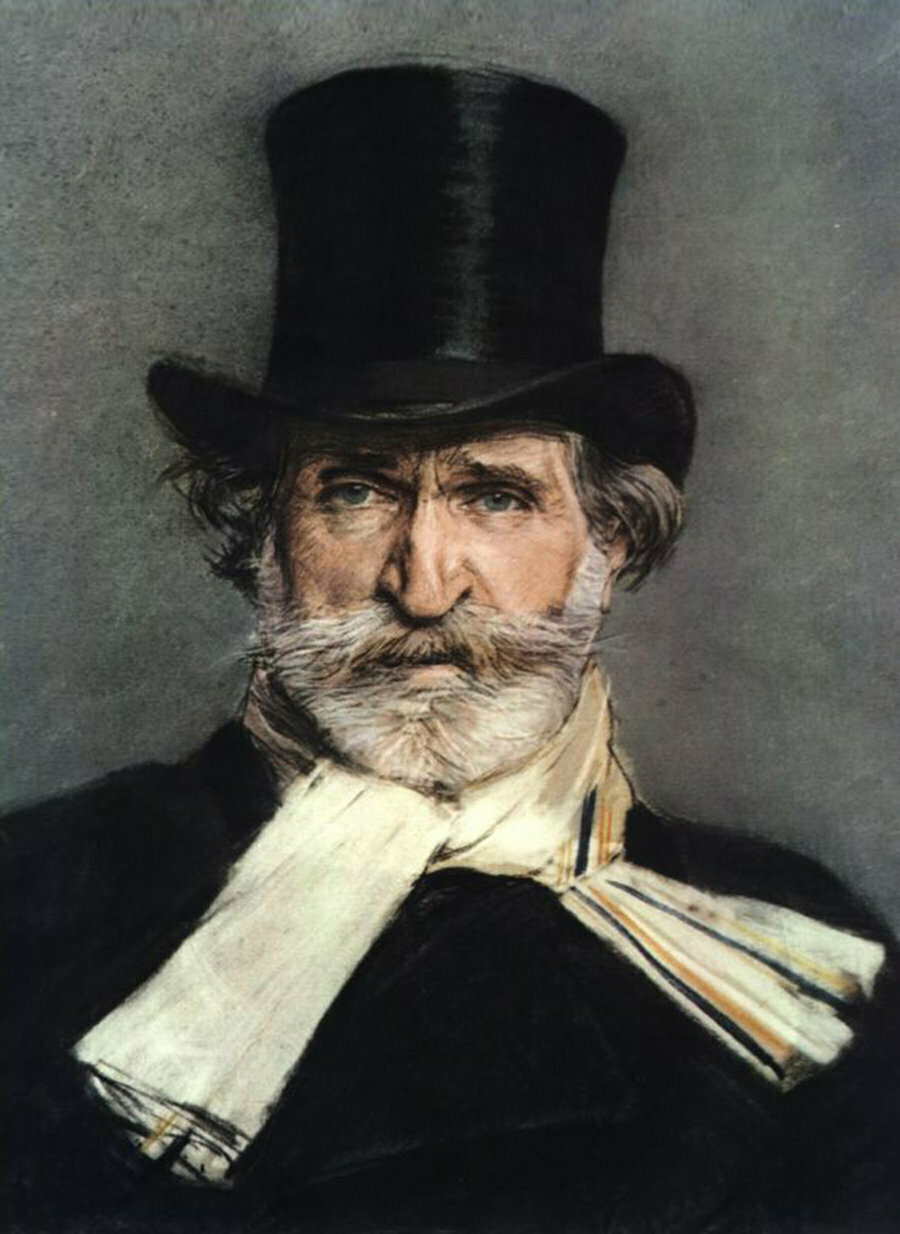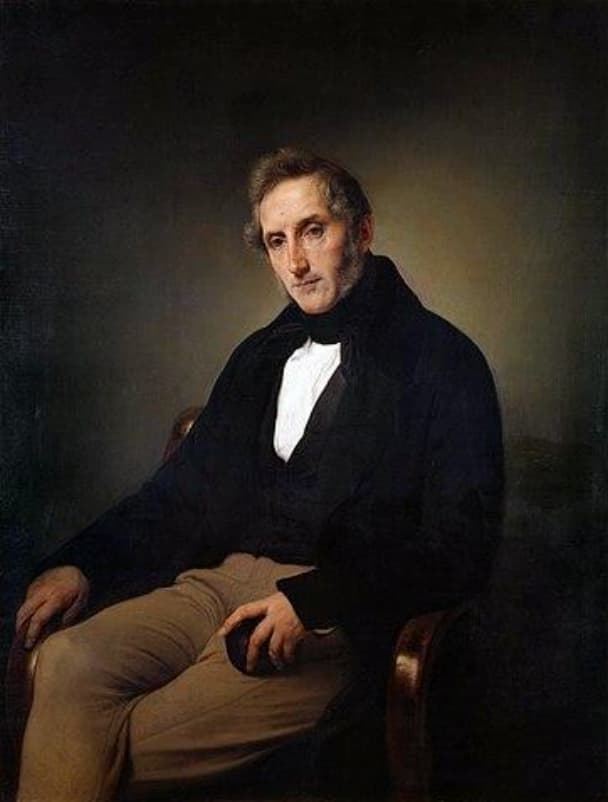In one of their recent issues, the BBC Music Magazine published an article on the most famous Requiems. Jeremy Pound asked composer Michael John Trotta, who had recently completed his own Requiem, to name his favorite. At first Trotta replied that he liked Brahms‘s Requiem, but soon afterwards changed his mind to Mozart‘s. “There’s something about how he both acknowledged and transcended tradition…,” remarked Trotta.
If a similar question were asked to me, I would answer that my favorite is Verdi‘s Requiem.

Portrait of Giuseppe Verdi by Giovanni Boldini
I first heard this piece many years ago on an LP of a live recording from Moscow made in September 1964.
Verdi: Messa da Requiem (von Karajan & Scala Orchestra in Moscow, 1964)
Herbert von Karajan headed the Milan Scala ensemble that toured Moscow and performed Verdi’s Requiem at the Bolshoi Theatre. The soloists were Leontyne Price, Fiorenza Cossotto, Carlo Bergonzi and Nikolai Ghiaurov. Such a brilliant group of musicians spoke for itself and guaranteed an exemplary performance. The impeccable playing of the orchestra, the singing of the choir and the outstanding skill of the soloists along with the conductor made an absolutely indelible impression on me. I was struck by the voices of all the soloists, but most of all by the deep, velvety tone of Fiorenza Cossotto. Moreover, I especially enjoyed the fragment “Hostias,” where Carlo Bergonzi makes a unique trill on the word “offerimus.” As a result of numerous international moves, this recording was lost.
Fortunately, I was able to find something equally valuable. This time, Karajan conducted the same cast, only the tenor part was performed by a young Luciano Pavarotti instead of Carlo Bergonzi. And I must note that Pavarotti sang his part like an angel, particularly in “Ingemisco.” This performance differs from other equally famous ones in that the soloists do not sing with excessive exaltation.
This performance took place at La Scala in January 1967 to mark the tenth anniversary of the death of Arturo Toscanini. A DG-Unitel film was made in an empty auditorium during the two days leading up to the public performances.
Herbert von Karajan: Verdi Requiem 1967
How Requiem was created
The poet, novelist and philosopher Alessandro Manzoni (1785-1873) had been for Giuseppe Verdi an indisputable example of an artist who glorified a resurrection and liberty of Italy.

Alessandro Manzoni by Francesco Hayez
Verdi always treated Manzoni with great admiration and strived to continue his patriotic ideas in the field of the opera. When Manzoni died in May 1873, the composer did not attend his funeral, because to be part of the burial of a loved one was unbearable for him. “I am deeply moved by the death of our great man. But I won’t go to Milan,” he wrote to his publisher, Giulio Ricordi. Soon after that Verdi informed him that he would like to write a Requiem dedicated to the anniversary of Manzoni’s death.
The work continued for a year and was completed in May 1874. The first performance took place in St. Mark’s Church in Milan. Verdi himself conducted the two hundred and thirty musicians, choristers, and a quartet of soloists. The work was presented again three days later at La Scala and soon enjoyed further performances across Europe.
The title ‘Requiem’ comes from ‘Requiem aeternam dona eis, Domine’ (‘Grant them eternal rest, o Lord’), the first sentence of the Introit of the Catholic Mass for the Dead. There are many composers who have written Requiems: from Dufay and Ockeghem in the 15th century to Mozart, Brahms, Bruckner, Faure, Duruflé, Dvorak, etc., in the subsequent centuries.
Verdi’s Requiem is one of the most dramatic, and undoubtedly the most operatic, of its type ever composed. It is a large-scale work performed by extensive orchestral and choral forces, and characterized by impressive solo parts and choruses.
Verdi’s Requiem at Walton Art Center, Fayetteville, AR
The performance of Verdi’s Requiem is always a grand event for both musicians and the public. It was recently performed by the Artosphere Festival Orchestra, a large choir uniting voices from the Tulsa Opera Chorus, the University of Arkansas Schola Cantorum and the SoNA Singers, and a quartet of soloists: soprano Tiffany Townsend, mezzo-soprano Allyson McHardy, tenor Matthew Plenk and bass Adam Lau. The huge corps of musicians was led by Maestro Corrado Rovaris.
To tell the truth, I had no expectations of an outstanding performance due to the fact that most of the members of the choir, orchestra, and soloists were musicians at the very beginning of their careers. Only Maestro Corrado Rovaris already had a name in the opera world, being the Music Director of Opera Philadelphia.

Corrado Rovaris conducts Artosphere Festival Orchestra
Despite some of my doubts, the opening sounds of the orchestra and choir reminded me again how wonderful this piece is. In turn, “Kyrie” showed what can be expected from the soloists: Tiffany Townsend gave good hope.
The difference between listening to a performance live and listening to a recording is that you can’t skip to your favorite part at any time. For example, I usually skipped “Dies Irae” and “Tuba mirum” due to their extreme drama and frightening fortissimo. This time I listened to both parts in their entirety. The choir did its job well throughout the piece, but the orchestra was less successful: the wind instruments were particularly inexpressive.
It was time for “Ingemisco,” one of my favorite parts. Matthew Plenk has a beautiful timbre, but unfortunately in this number he lacked vocal strength and expressiveness. In “Liber scriptus” and “Confutatis,” the mezzo-soprano Allyson McHardy and bass Adam Lau demonstrated their commitment and desire to convey the emotional charge to the audience. In the final part, “Libera me,” soprano Tiffany Townsend reaffirmed her vocal prowess and ability to continue the tradition of the best sopranos.
The concert ended with a long applause from the audience who gave a standing ovation to Maestro Corrado Rovaris, choir director Lyndon Meyer and all the musicians who put their efforts and dedication to the performance of Giuseppe Verdi’s grandiose work.
For more of the best in classical music, sign up for our E-Newsletter
Nadia Koval is a journalist and music critic. She was born in Kazakhstan. Prior to moving to Arkansas, United States, about 5 years ago, she lived in Argentina for 20 years, writing for publications such as QUID Magazine and Mozarteum Argentino. She is the author of a biography of Sergei Prokofiev (Spanish), as well as “Russian Musical Culture of the 20th Century” (Russian).





What a wonderfully honest review from a worldly scope. Thank you, Nadia for such thoughtful discussion from someone who obviously enjoys music